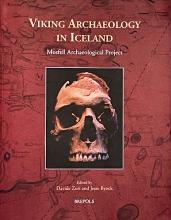In the Viking Age North Atlantic, the most important social space was the farmstead, with its residential buildings, outbuildings, and outdoor activity areas. Here members of the household - the basic socioeconomic unity - interacted with each other, their animals and visitors, and performed any number of daily routines and social, economic, and religious activities. Fortunately for us, Viking Age houses in the North Atlantic region are exceptionally well preserved compared to their counterparts in Scandinavia due to the lack of arable agriculture in Iceland and the use off turf as a construction material for walls as well as roofs, which tended to collapse inwards to rapidly seal internal occupation deposits. Houses such as the tenth- to early eleventh-century house at Hrísbrú in the Mosfell Valley therefore have the potential to provide important information about the organization of everyday life in the Viking Age. In Iceland, where the number of excavated Viking Age houses now numbers close to forty, the house at Hrísbrú was exceptional in its preservation, size, and the richness of its artefact assemblage, and it therefore has an important role to play in the understanding of how the earliest settlers established new homes for themselves in a new environment, how they organized their households and economic activities, how they interacted with the wider community, and how household and social organization changed over the first few hundred years of the society´s development.
Social Space and Social Status in the Viking-Age House at Hrísbrú
Milek, Karen, Davide Zori, Colin Connors, Waltraud Baier, Kate Baker, and Jesse Byock. 2014. "Interpreting Social Space and Social Status in the Viking-Age House at Hrísbrú Using Integrated Geoarchaeological and Microrefuse Analyses." In Viking-Age Archaeology in Iceland: the Mosfell Archaeological Project, ed. Davide Zori and Jesse Byock, pp. 143-62. Turnhout: Brepols.
View PDF
(7.31 MB)
